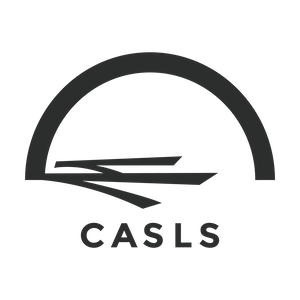View Content #18083
| Contentid | 18083 |
|---|---|
| Content Type | 3 |
| Title | Social Media and Writing in a Second Language |
| Body | Greg Kessler is the Director of the Language Resource Center in the College of Arts & Sciences and Associate Professor of Computer Assisted Language Learning (CALL) in the Department of Linguistics at Ohio University where he teaches CALL practice and research courses. His research addresses the convergence of language, digital environments, language learning and associated human behavior. Second language writing instruction has typically focused upon a very limited repertoire of academically oriented formats. However, we are likely to interact with text across a variety of tasks and contexts. Some have claimed that we are witnessing an increase in quantity and quality of writing solely due to the popularity of social media among students (Purcell, Buchanan, & Friedrich, 2013). With social media and the participatory culture it promotes, there are numerous new ways to think about writing activities, tasks, materials and contexts (Kessler, 2013). The potential for collaborative, cooperative and other social activities in second language writing is vast. It is also an area that is largely just beginning to be explored. However, a few recent studies across a range of writing activities and contexts provide some suggestions for pedagogical practice. Among these, researchers have explored collaborative writing practices across a variety of tools, including blogs (Bloch, 2007; Sun & Chang, 2012), wikis (Elola & Oskoz, 2010; Kessler, 2009), web-based word processing (Kessler, Bikowski & Boggs, 2012) and text chat (Sauro & Smith, 2010). In recognition of the potential for collaborative practices in L2 writing, Storch (2005) has argued that we may need a "reconceptualization of classroom teaching" (p. 169). These studies reveal many shared characteristics. A synthesis of the literature reveals that collaborative writing practices can result in increased motivation and potential for engagement. There are also reports of increased awareness of issues related to form as well as insights into audience, purpose and tone which are often focal points of L2 writing instruction. However, it may be the potential to increase authenticity in classroom practice that is most compelling. Authenticity in language use, tasks, contexts, and materials can greatly enhance students' language learning experiences (Reinders & Hubbard, 2013). Writing within today's social media landscape offers many new authentic opportunities. These new practices are commonplace in our daily lives and offer great potential for our classrooms as well. We are all quite accustomed to the participatory social dialogue of facebook status updates and microblog tweets. We also have many opportunities to engage with one another through location-based crowd sourced data aggregated contexts such as Foursquare, Google Maps, and Yelp. The writing (and reading) that takes place in these contexts can be coordinated around a variety of purposes. Students could provide actual or simulated reviews in any language. They could reply to reviews or create a synthesis of reviews. By relying on the engagement potential and authenticity of these practices, we can create interesting and meaningful experiences for students around varied emerging social writing practices. The opportunity to engage students in collaborative activities that take place in (or closely mimic) authentic social media language practices can range from a simple task of creating a single sentence meme to designing entire social mapping projects such as those supported by smap (http://www.smapapp.com/). Teachers, and students, are only limited by their own creativity. References Bloch, J. (2007). Abdullah's blogging: A generation 1.5 student enters the blogosphere. Language Learning & Technology, 11, 128-141. Elola, I., & Oskoz, A. (2010). Collaborative writing: Fostering foreign language and writing conventions development. Language Learning & Technology, 14(3), 51–71. Kessler, G. (2009). Student initiated attention to form in wiki based collaborative writing. Language Learning & Technology, 13(1), 79-95. Kessler, G., Bikowski, D., & Boggs, J. (2012). Collaborative writing among second language learners in academic web-based projects. Language Learning & Technology, 16(1), 91-109. Kessler, G. (2013). Collaborative language learning in co-constructed participatory culture. CALICO Journal, 30(3), 307-32 Purcell, K., Buchanan, J., Friedrich, L. (2013). The impact of digital tools on student writing and how writing is taught in schools [Internet & American Lift Project]. Washington, DC: PewResearch Center. Retrieved from http://www.pewinternet.org/files/old-media/Files/Reports/2013/PIP_NWP%20Writing%20and%20Tech.pdf Reinders, H., & Hubbard, P. (2013). CALL and learner autonomy: Affordances and constraints. In M. Thomas, H. Reinders, and M. Warschauer (Eds.), Contemporary computer assisted language learning. London: Continuum Books. Sauro, S., & Smith, B. (2010). Investigating L2 performance in text chat. Applied Linguistics, 31(4), 554-577. doi: 10.1093/applin/amq007 Storch, N. (2005). Collaborative writing: Product, process, and students' reflections. Journal of Second Language Writing, 14, 153–173. doi: 10.1016/j.jslw.2005.05.002 Sun, Y., & Chang, Y. (2012). Blogging to learn: Becoming EFL academic writers through collaborative dialogues. Language Learning & Technology, 16(1), 43–61. |
| Source | CASLS Topic of the Week |
| Inputdate | 2014-08-08 06:12:38 |
| Lastmodifieddate | 2014-09-01 03:08:23 |
| Expdate | Not set |
| Publishdate | 2014-09-01 02:15:01 |
| Displaydate | 2014-09-01 00:00:00 |
| Active | 1 |
| Emailed | 1 |
| Isarchived | 0 |
